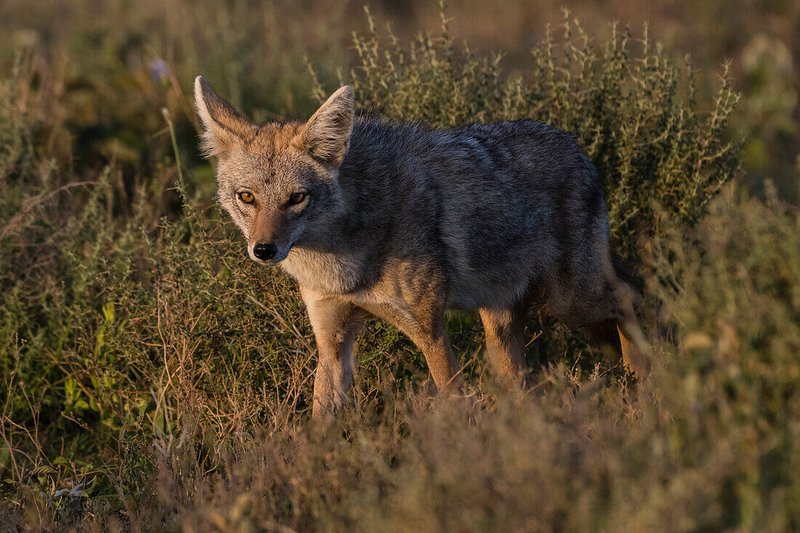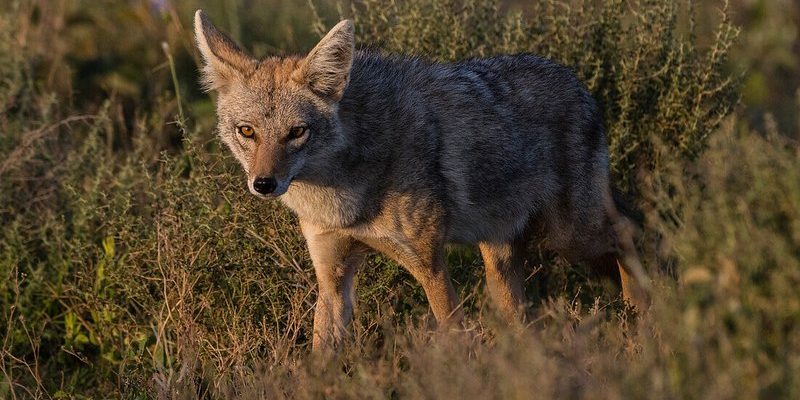
Honestly, the question of whether jackals are endangered isn’t as straightforward as a simple yes or no. There are several species of jackals spread across Africa, the Middle East, and parts of Asia, and their conservation status varies significantly. Some are thriving, while others are facing threats that jeopardize their populations. Just like how a family of birds might thrive in one forest but struggle in another due to habitat loss, jackals also find their survival closely tied to the environments they inhabit.
In this article, we’ll explore the different species of jackals, the challenges they face, and the conservation efforts underway to protect them. You might be surprised by what you learn about these remarkable animals!
Understanding Jackals: Species and Habitats
Jackals are medium-sized canids that belong to the genus *Canis*. There are three primary species: the golden jackal, the black-backed jackal, and the side-striped jackal. Each species has its own quirks and preferred environments.
– Golden Jackal: Found in a wide range of habitats, from savannas to mountainous areas, the golden jackal is the most adaptable of the trio. Its diet varies from fruits to small mammals, making it a jack-of-all-trades.
– Black-Backed Jackal: This species is famous for its striking black back and is primarily found in savannas and open grasslands. Black-backed jackals are opportunistic feeders, often scavenging from larger predators.
– Side-Striped Jackal: The most elusive of the three, the side-striped jackal prefers dense bush and forest habitats. It relies on a more specialized diet, focusing on small insects and rodents.
Each species plays an essential role in their ecosystem, helping control populations of smaller animals and even cleaning up carrion.
The Conservation Status of Jackals
When we talk about conservation status, we’re often referring to how many of these animals are left in the wild and what threats they face. Currently, the golden jackal is classified as “Least Concern” by the International Union for Conservation of Nature (IUCN). This means that, for now, they’re not facing immediate threats to their population.
However, things look a bit different for the black-backed jackal and the side-striped jackal. The black-backed jackal has been labeled as “Near Threatened” in some regions due to habitat destruction and conflict with livestock farming. The side-striped jackal, on the other hand, is more localized and can sometimes find itself in trouble, particularly as human development encroaches on its habitat.
You might be wondering why all this matters. Well, the health of jackal populations can indicate the overall health of their ecosystems. If jackals are thriving, it often means that their habitats are balanced and healthy, which benefits a plethora of other species.
Threats Facing Jackals
Jackals face a variety of challenges that can impact their populations. Here are the main threats they encounter:
- Habitat Loss: As human populations grow, many natural habitats are being destroyed. Urbanization, agriculture, and deforestation all contribute to the shrinking of jackal homes.
- Human-Wildlife Conflict: Jackals often venture into farmlands in search of food. When they prey on livestock, farmers may see them as a threat and take lethal action.
- Poaching and Hunting: While not as widespread as other threats, jackals can still be hunted for their pelts or to reduce perceived threats to livestock.
These challenges make it increasingly difficult for jackals to thrive in the wild.
Conservation Efforts in Action
Fortunately, there are dedicated conservation efforts aimed at protecting jackals and their habitats. Various organizations and local communities are working on several fronts to help support these animals.
– Habitat Protection: Many conservation groups are focusing on preserving natural habitats to ensure jackals can live and hunt freely. This includes creating protected areas where development is restricted.
– Community Awareness: Raising awareness among local farmers about the importance of jackals can significantly reduce conflict. Educating them about sustainable farming practices and non-lethal deterrents can help coexistence.
– Research and Monitoring: Ongoing research is crucial for understanding jackal populations and ecology. By monitoring their numbers and health, conservationists can better tailor efforts to protect them.
These initiatives show that there’s hope for jackals and that with the right attention, their populations can stabilize.
How You Can Help Jackals
Even if you’re not a conservationist, there are plenty of ways you can support jackals and their habitats. Here are a few ideas:
- Support Wildlife Organizations: Donating to or volunteering with organizations focused on wildlife conservation can make a real difference.
- Spread Awareness: Share what you learn about jackals with friends and family. The more people know about the challenges they face, the more support they can receive.
- Be a Responsible Traveler: If you travel to areas where jackals are found, choose eco-friendly tours that promote conservation and respect local wildlife.
By taking these small actions, you can contribute to the larger effort of protecting jackals and their ecosystems.
The Future of Jackals: What Lies Ahead
Looking ahead, the fate of jackals largely depends on how we manage our relationship with the natural world. As urban areas expand and agriculture competes for land, these clever creatures need our support more than ever. The good news is that with awareness and dedication, we can improve their chances.
Protecting jackals isn’t just about saving a species; it’s about preserving the balance of ecosystems. Healthy jackal populations can help control prey species, ultimately benefiting the wider environment.
So, next time you hear about jackals, remember that their survival is intricately linked to our actions. With continued conservation efforts and community engagement, there’s hope that these remarkable animals can thrive alongside us.
In conclusion, jackals may not be widely discussed as endangered species, but they still face their challenges. By understanding their plight and supporting conservation initiatives, we can play a part in ensuring that these fascinating creatures have a future in the wild. Let’s continue to learn, advocate, and act for the wildlife that enriches our planet.

